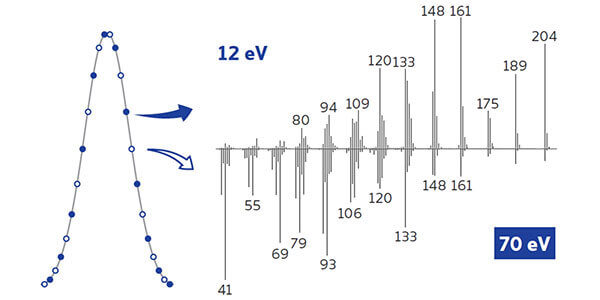
This technical note describes the use of Tandem Ionisation for BenchTOF2™ mass spectrometers, to acquire both hard (70 eV) and soft (10–20 eV) electron ionisation (EI) in a single analysis. As well as describing the theoretical background to the technique and the benefits that stem from soft EI, we point out how Tandem Ionisation breaks new ground by providing sample characterisation in a single, streamlined workflow.
Introduction
Electron ionisation (EI) is the production of ions by direct bombardment of analyte molecules by electrons. Conventionally, EI is used with an accelerating potential difference of 70 V, because at approximately 70 eV, the efficiency of energy transfer from electrons to most organic molecules is at a maximum and varies little with electron energy. This results in a relatively high degree of ionisation (and thus good sensitivity) and consistent mass spectra – the two principal reasons 70 eV EI is standard practice for GC–MS analysis. Indeed, some large commercial libraries, such as NIST and Wiley, have been developed almost exclusively on the basis of EI at 70 eV.





